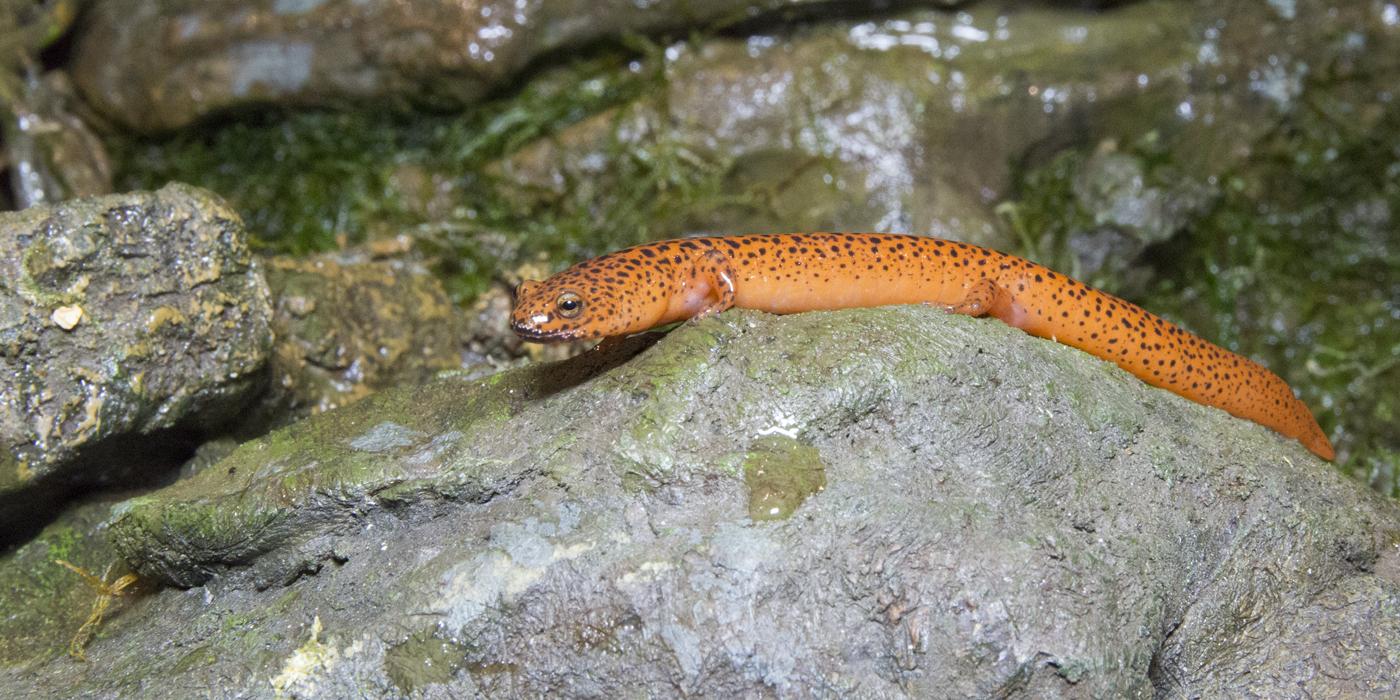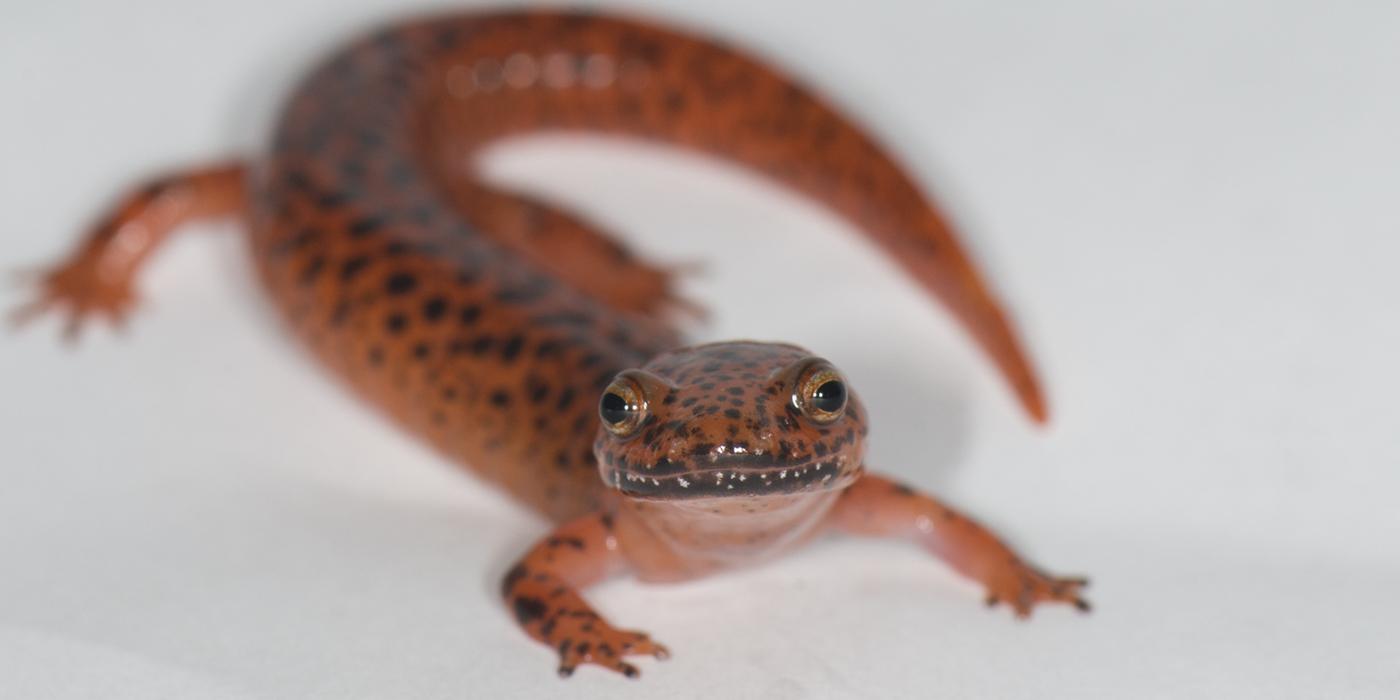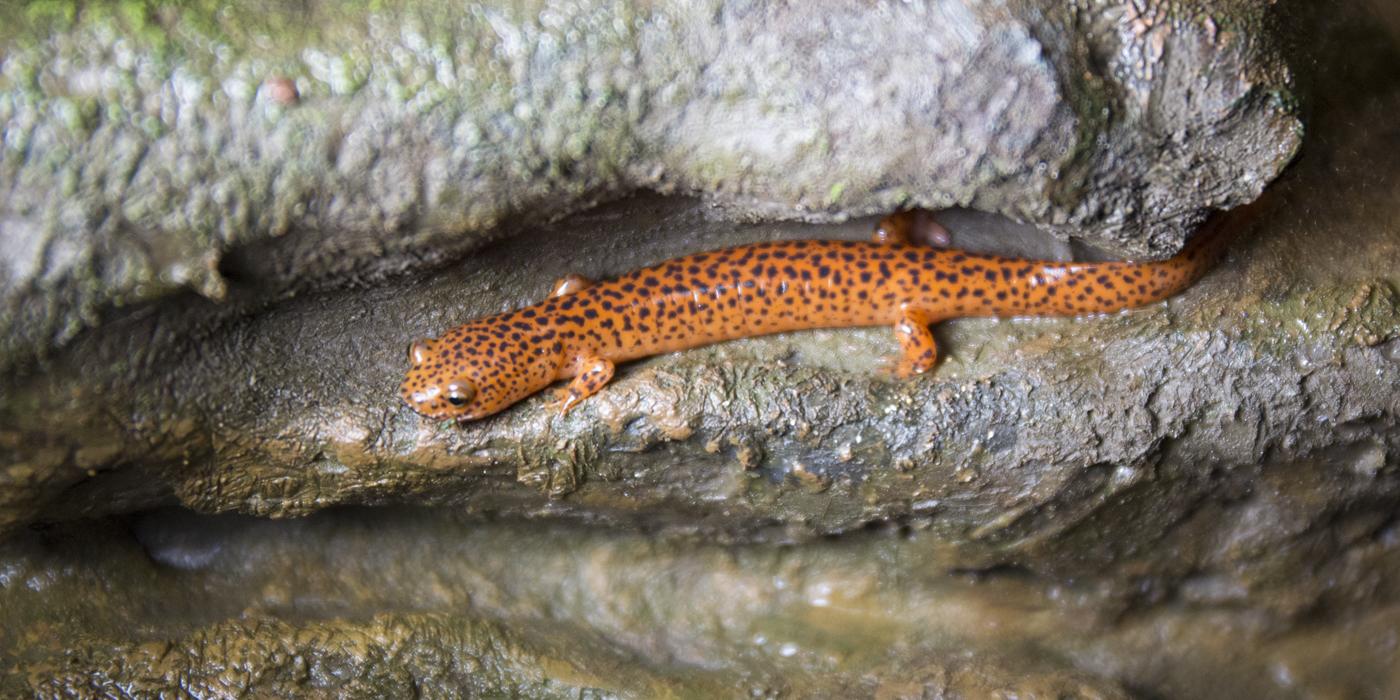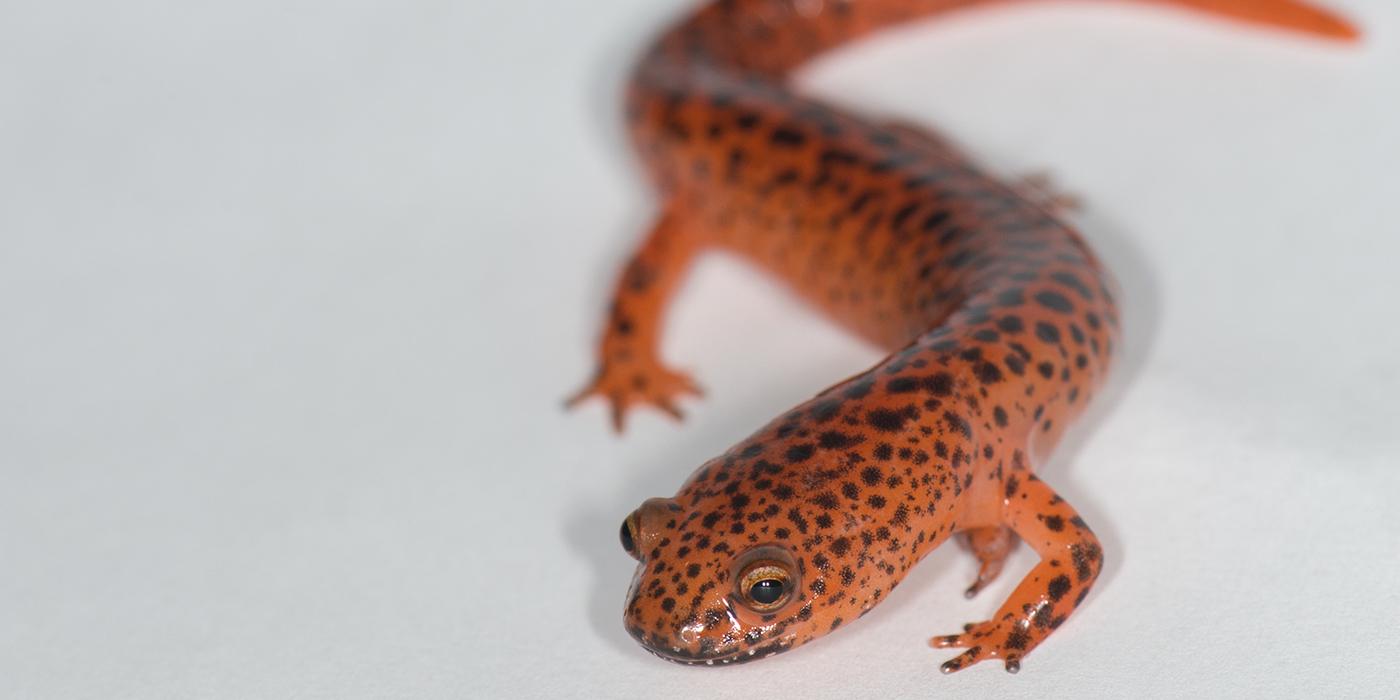Physical Description
These stout-bodied salamanders range from a purple-brown to a bright, crimson red with irregularly shaped, dark spots along their backs. Younger individuals tend to exhibit brighter colors, while adults darken with age.
Red salamanders are equipped with a projectile tongue that extends and withdraws in just 11 milliseconds. They also have glands that produce a toxic secretion to deter predators. When threatened—most commonly by birds, skunks and raccoons—these salamanders assume a defensive posture. They curl their bodies into a c-shape, wrapping their tails and hind limbs around to protect their head.
Size
Native Habitat
The red salamander's range extends from parts of northern New York to the Gulf Coast in elevations ranging from sea level to about 1500 feet. They are absent from coastal plains south of Virginia and the Florida peninsula.
These salamanders are aquatic and terrestrial. They prefer cold, clear streams and are also found in wooded areas under rocks, bark and leaf litter.
Food/Eating Habits
They eat a variety of small invertebrates, including arachnids, worms and small insects. They also occasionally feed on smaller salamanders. Because they depend on damp habitats, their foraging range changes with the seasons, expanding during wet seasons and retracting in dry seasons.
At the Smithsonian's National Zoo, red salamanders are fed crickets, fruit flies, bean beetles, isopods, springtails and black worms.
Reproduction and Development
Red salamanders display courtship behaviors from spring through fall. A male rubs his snout on a female's head and chin. As the female retreats, the male moves forward, positioning her chin on his tail. The male deposits a spermatophore, which is picked up by the female as she passes over it. Female red salamanders are capable of storing sperm for long periods of time and may lay eggs several months after mating.
Females typically lay their eggs in the fall in streams attached to submerged rocks. They lay between 30 and 130 eggs, which later hatch in early winter. The salamander's larval stage lasts for about two to three years.
Conservation Efforts
The red salamander is considered a species of least concern by the International Union for Conservation of Nature's Red List. While the species' overall population is thriving, several local populations are threatened by loss of habitat and pollution. Because, like most amphibians, red salamanders require clean, clear water, they are susceptible to any activity that impacts water quality, such as logging, mining and development.
Help this Species
- Organize or attend a stream, river, lake or other waterway cleanup in your area to preserve aquatic habitats for local species.
- Conservation starts with you! Join a citizen science project, such as FrogWatch or Neighborhood Nestwatch, where you can help collect valuable data for scientists. Encourage your friends and family to get involved too.
- Are you a student? Did you love what you learned about this animal? Make it the topic of your next school project, or start a conservation club at your school. You'll learn even more and share the importance of saving species with classmates and teachers, too.
- Protect local waterways by using fewer pesticides when caring for your garden or lawn. Using fertilizers sparingly, keeping storm drains free of litter and picking up after your pet can also improve watershed health.
Animal News

Leaf-tailed Gecko Treated for Skin Cancer With Chemotherapy






